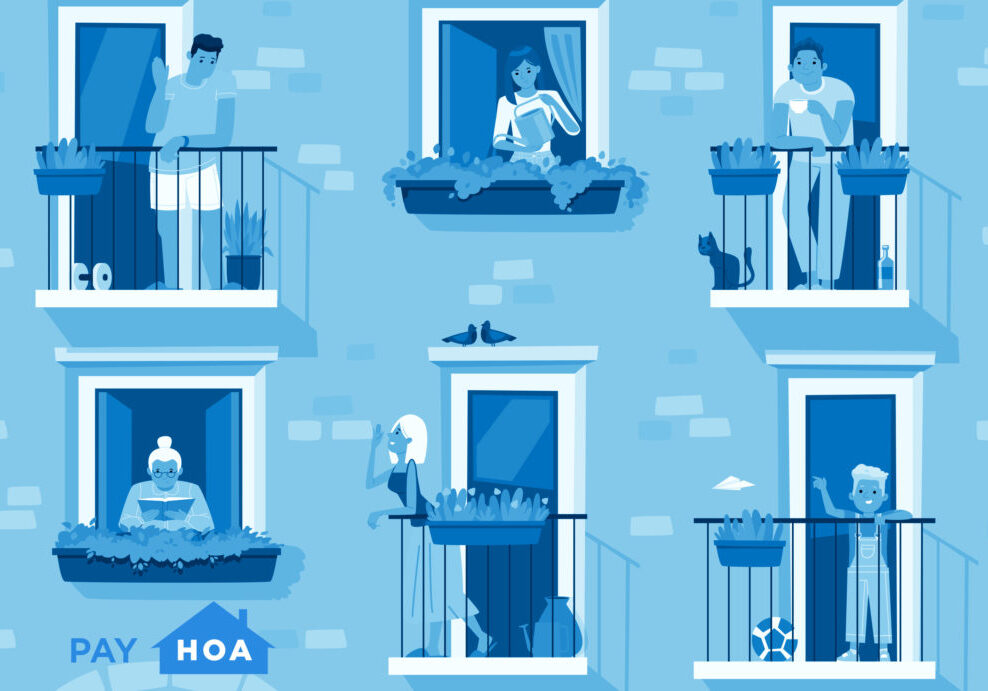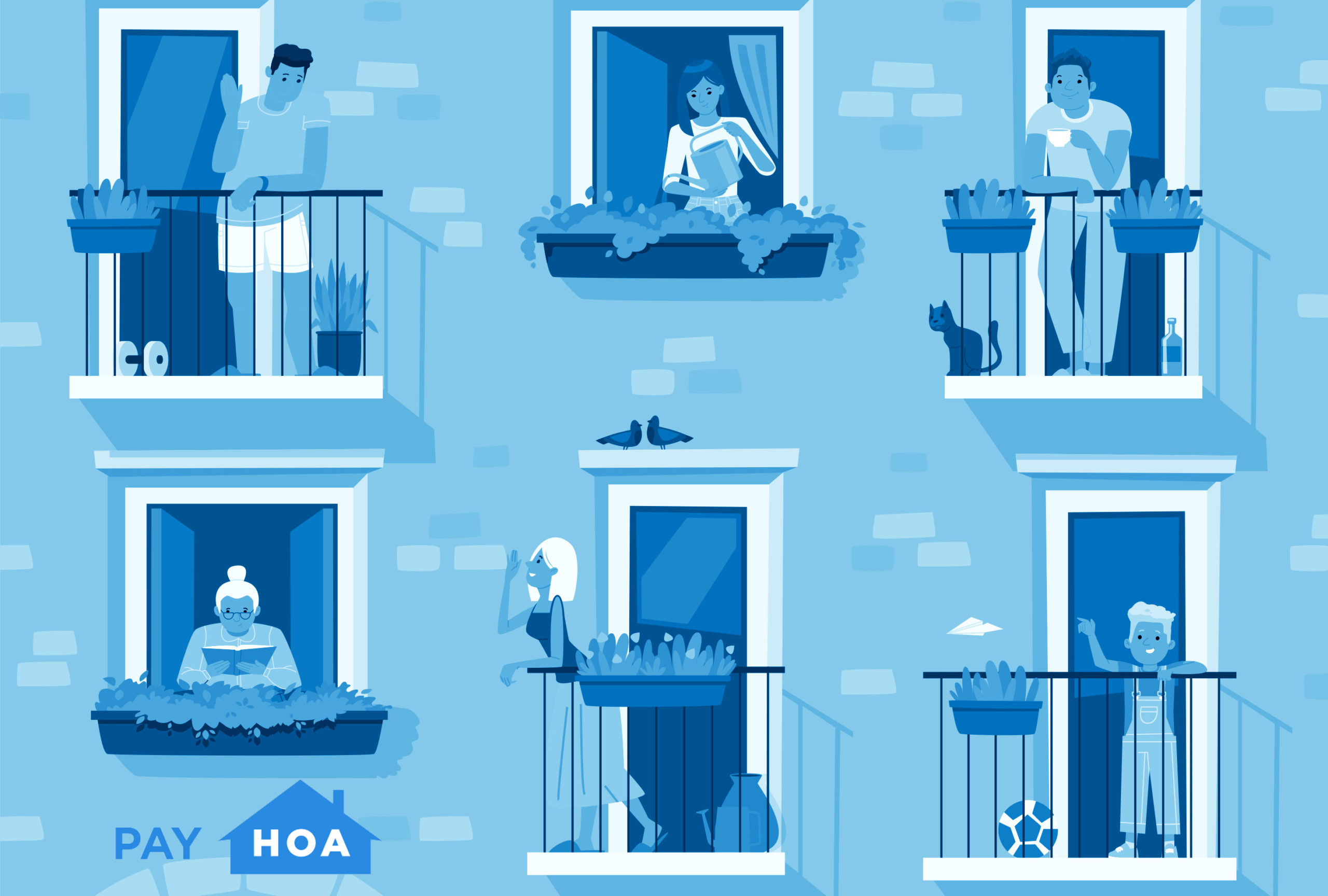 Jesse Hitt • 31 Jan 2023 • 6 min read
Jesse Hitt • 31 Jan 2023 • 6 min readHOA Community Management Tools Keep the Peace


HOA management is about making your neighborhood a safe and pleasant place to live, but people can agree to the same goal while seeing different ways of getting there.
In the best-case scenario, the parties work together to achieve something that’s better than they would’ve come up with on their own. When the results are beneficial for everyone involved, it’s called synergy.
But synergy isn’t easy to achieve because everyone involved must be willing to find a workable solution. Anyone who’s ever been in a leadership position knows that conflicts arise and personalities clash, turning the search for solutions into a walk across a tightrope.
Perhaps there are people who join their HOA community management team and never have to deal with a neighborhood conflict. If this is you, you have reason to be truly grateful.

The facts on the ground might change, but the themes of neighborhood conflict are well-known:
- “I can do what I want because it’s my house.”
- “They can’t do what they want because of community rules.”
- “This is the HOA’s problem to fix.”
- “The HOA should leave me the heck alone and focus on the real troublemakers.”
If you’re ever called on to mediate an uncomfortable and contentious situation, it helps to recognize the themes. The goal is to see things from a proverbial “10,000-foot” view and avoid getting tangled up in charged emotions.
By maintaining a psychological distance from the problem, you’re better able to see potential solutions than someone who’s fully invested in achieving a specific outcome.
Neighbors can get into their squabbles without any help from an HOA, but some troubles start when homeowners and board members disagree on the application of HOA policies and procedures.
Multiple HOA pain points have the potential to create conflict:
- collecting and managing dues, violations, and maintenance requests
- tracking records and keeping them current and accurate
- being accessible to members
The good news is HOAs around the country have long histories of dealing with neighborhood conflicts, and some best practices have been developed to help ease and in some cases avoid difficult situations.
Your HOA bylaws and other documents are your most important tools. They exist to ensure everyone in the community is subject to the same rules and regulations, so there’s no favoritism.
In addition, something as simple as adopting the right HOA management software can reduce some of those pain points by making communication between board members and residents easier and more effective.
Maybe you volunteered for an HOA community management team that never has to deal with problems or disagreements.
If so, congratulations.
If not, don’t fret. When troubles arise, there are ways to restore peace, especially if you have the right attitude.

An ounce of prevention
Before getting into how your HOA bylaws and management software can help, let’s spend a little time thinking about cultivating the right attitude for dealing with conflicts.
No matter what the issue happens to be, the people you’re dealing with are your neighbors. There are ways of approaching difficult conversations that make pleasant outcomes more likely:
- Commit to communication. Your neighbors can’t resolve an issue if they don’t know about it. Acknowledging and discussing a problem isn’t the same thing as assigning blame.
- You’re not a mind reader. If your neighbors do something that annoys others, there’s a good chance that wasn’t their intention. Start by giving them the benefit of the doubt.
- Don’t let issues fester. If someone does something that other neighbors don’t appreciate, address the issue early and calmly.
- People aren’t problems. People can do problematic things. Focus on the issues and not the personalities involved.
- Be respectful. Gossip and rumors can only make matters worse. Talk directly to the neighbor in question.
- Stay calm and listen. Sometimes, all another person needs is someone who’s willing to listen to their side of the story.
- Take a break if things get heated. Let the steam cool and pick up the discussion at a later time.
Important documents
When someone buys a house and joins a homeowners association, they agree to abide by important tools for HOA community management:
- covenants, conditions, and restrictions (CC&Rs)
- bylaws
- rules and regulations
CC&Rs are typically legally binding documents that lay out rights and responsibilities. They cover exterior changes to the home, architectural changes, landscaping restrictions, parking rules, and trash placement.
Each of those areas can be a potential source of conflict if they’re not communicated clearly before the issues arise. They provide the HOA with a legal backdrop when there are enforcement issues.
Bylaws provide a set of operating instructions for board members and officers. They lay out what work is to be done and how. Topics include:
- elections and meetings
- budgeting and financial management
- collecting dues and fees
- monitoring and enforcing violations
- vendor management
- upkeep of shared areas and architecture
- maintaining open communication with residents
- storing and maintaining community records
In addition to CC&Rs and bylaws, your HOA might have a set of rules and regulations. These develop over time and adapt to community needs.
The better you understand all of these HOA community management tools, the better you can address violations.
Board members, officers, and other volunteers should have ready access to these documents in order to ensure a smooth-running homeowners association.
Taking steps to calmly and clearly explain the rules will go a long way toward avoiding conflicts.
If there is a violation, then a robust set of HOA community management tools provide a pathway toward settling the issues.

Change is possible for HOA community management
CC&Rs, bylaws, and community regulations are crucial until they’re not. As you investigate your HOA’s founding documents, you want to make sure they’re up-to-date and relevant.
For instance, many self-managed HOAs across the country are switching to HOA management software, so board members and officers can work more easily and efficiently.
One benefit of the right software is the ability to make digital payments to vendors. However, some HOA bylaws require two signatures on a check, which makes online payments difficult if not impossible.
Just as the founders created a way to amend the U.S. Constitution, there are ways to amend all of your HOA’s important documents. The rules should exist to support your neighborhood, not hamper it.
Changes shouldn’t be made without due diligence and community buy-in. The process of amending your CC&Rs, bylaws, and rules and regulations can encourage residents to get on the same page.
The right software can help HOAs avoid many of their traditional pain points. PayHOA allows residents to pay their dues on autopay. It also tracks complaints and correspondence, providing an easily accessible digital trail.
PayHOA provides board members and officers with multiple ways to share HOA documents and other important information with their neighbors. When it comes to avoiding conflict, communication and transparency are the best approaches because they make synergy more likely. Informed people feel included, which makes them less likely to rock the boat.
Your neighbors probably joined the HOA for the same reasons you did: They wanted to make their living environment as pleasant as possible. Issues will arise now and then, but in the end, residents believe in working together toward that common goal.
PayHOA offers an HOA management software solution for HOAs of any size or managerial priorities. To find out if PayHOA fits all your HOA management needs, try our software free for 30 days.
Share this article:
Enjoyed this Article? Try Another!
HOA Software Solves Absentee Owner Challenges for Knickerbocker Ridge
Summary Knickerbocker Ridge HOA is a tiny planned community governed by a homeowners association in…
Driving Efficiency at Scale: Your HOA Community Management
Summary Your HOA Community Management, Inc. is based near Indianapolis and manages 60+ HOAs nationwide…
Power Up Your Community: Get Your Q1 Goals Back on Track with HOA Management Software Solutions
If you’re playing catch-up or fine-tuning your plans, Q1 is the perfect time for HOA…


